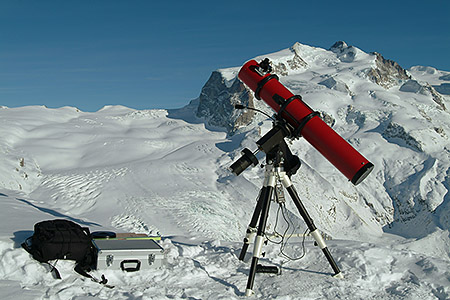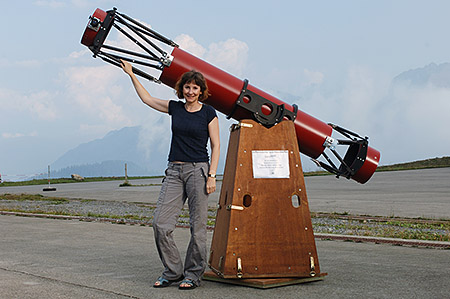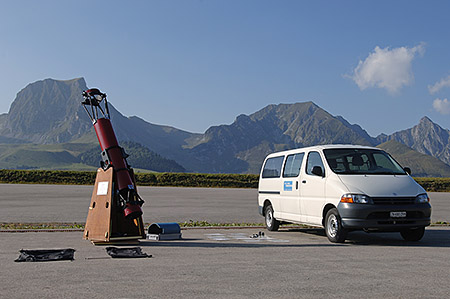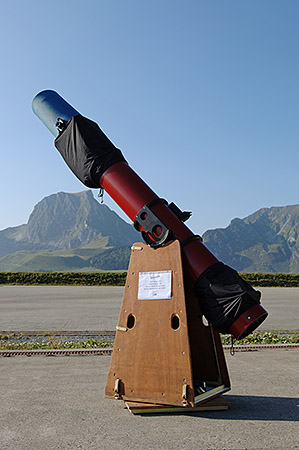Background
In 1980, when I was in Middle School / Junior High School, a German comic book magazine for youngsters called "Yps" ignited my passion for astronomy. With each issue of the magazine, a toy "Gimmick" was included: A small astronomical telescope (with plastic lenses), a star clock (using the big dipper and Polaris to estimate time), a small handbook about astronomy, and a phosphorescent star map. The toys weren't that useful under the night sky, but a lifelong interest in the universe and the desire for a "real" telescope arose.
In 1981, I got a small 2.4-inch refractor for Christmas. The views of the moon and the planets Jupiter and Saturn were awe-inspiring and I spent countless nights behind bigger and bigger telescopes to observe and photograph celestial objects. While studying physics at the Federal Institute of Technology (ETH) in Zurich, I ground the mirrors of two Newtonian telescopes - a 6-inch f/8 reflector called "Utopia" (1990) and a 10-inch f/11 reflector called "Ganymede" (making of telescope mirror: 1992-1994, completion of telescope: 1998). I used Utopia for both observing and astrophotography and Ganymede for observing only.

With its extreme length, Ganymede was a special planetary telescope. I was inspired by Harold Hill, author of "A Portfolio of Lunar Drawings" and amateur astronomer Jan de Lignie's Newtonian reflector. Looking at Hill's lunar drawings (obtained with a 10-inch f/10 reflector) and looking through de Lignie's 8-inch f/8 reflector convinced me that a long focal length offers superior performance.
The parabola of a mirror with a long focal length is easier to produce, one can employ a smaller secondary mirror (which enhances contrast and reduces diffraction effects), simple eyepiece designs (Ramsden, Kellner, etc.) offer better performance (off-axis aberrations like coma are less severe), the optics are easier to collimate and focusing is less critical (due to a greater depth of focus). No matter how bad the skies were, it was always a pleasure to use Ganymede. Unfortunately, the 10-inch f/11 telescope turned out to be too heavy for me as I grew older.



Continue reading: Part II: 16-inch f/4.5 Ninja